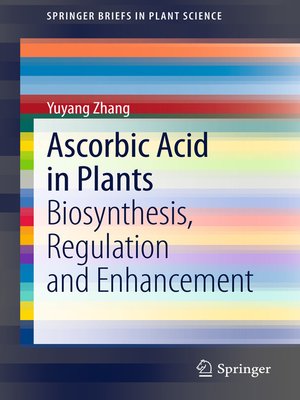Ascorbic Acid in Plants
ebook ∣ Biosynthesis, Regulation and Enhancement · SpringerBriefs in Plant Science
By Yuyang Zhang

Sign up to save your library
With an OverDrive account, you can save your favorite libraries for at-a-glance information about availability. Find out more about OverDrive accounts.
Find this title in Libby, the library reading app by OverDrive.



Search for a digital library with this title
Title found at these libraries:
| Loading... |
Ascorbate acid (AsA) is an important antioxidant in plants, playing important roles in various physiological processes. Humans have lost the ability to synthesize AsA because of the lack of L-gulono-1,4-lactone oxidoreductase, and thus have to absorb ascorbate from diet including fresh fruits and vegetables, as they are the major sources of ascorbate. Several pathways for AsA biosynthesis and metabolism have been identified in plants since 1998. More attention has been paid to improving ascorbate content in plants especially in fruits and vegetables. Significant progresses have been made on key enzymes and genes involved in the AsA biosynthesis and metabolism. Recently, more interests have arised in the regulation of AsA biosynthesis, as it is constantly regulated by the plant development and the environmental factors, e.g. light. Ascorbic acid is also frequently reported to affect plant growth and development e.g. flowering time and fruit ripening.
The scope of the book is to cover the biological role, biosynthesis and metabolism, regulation, and metabolic modification of ascorbate in plants.






